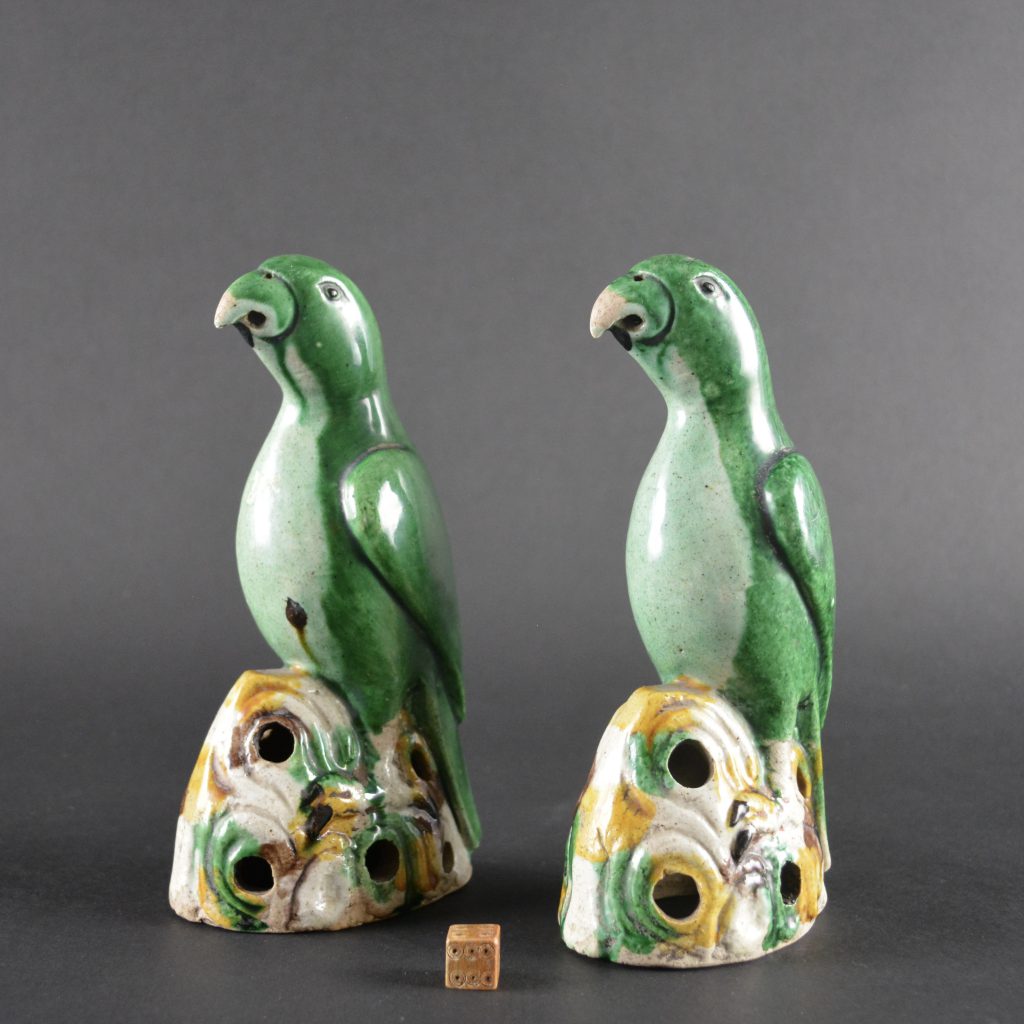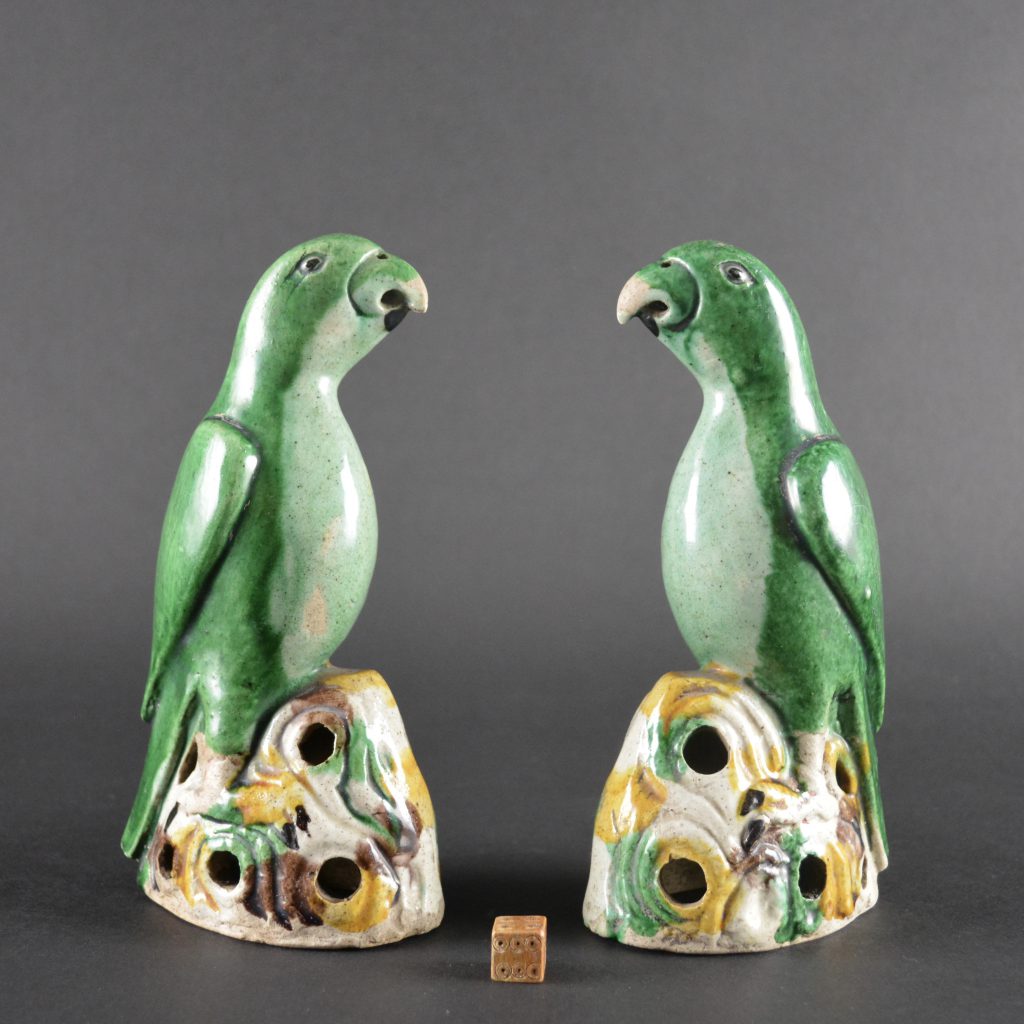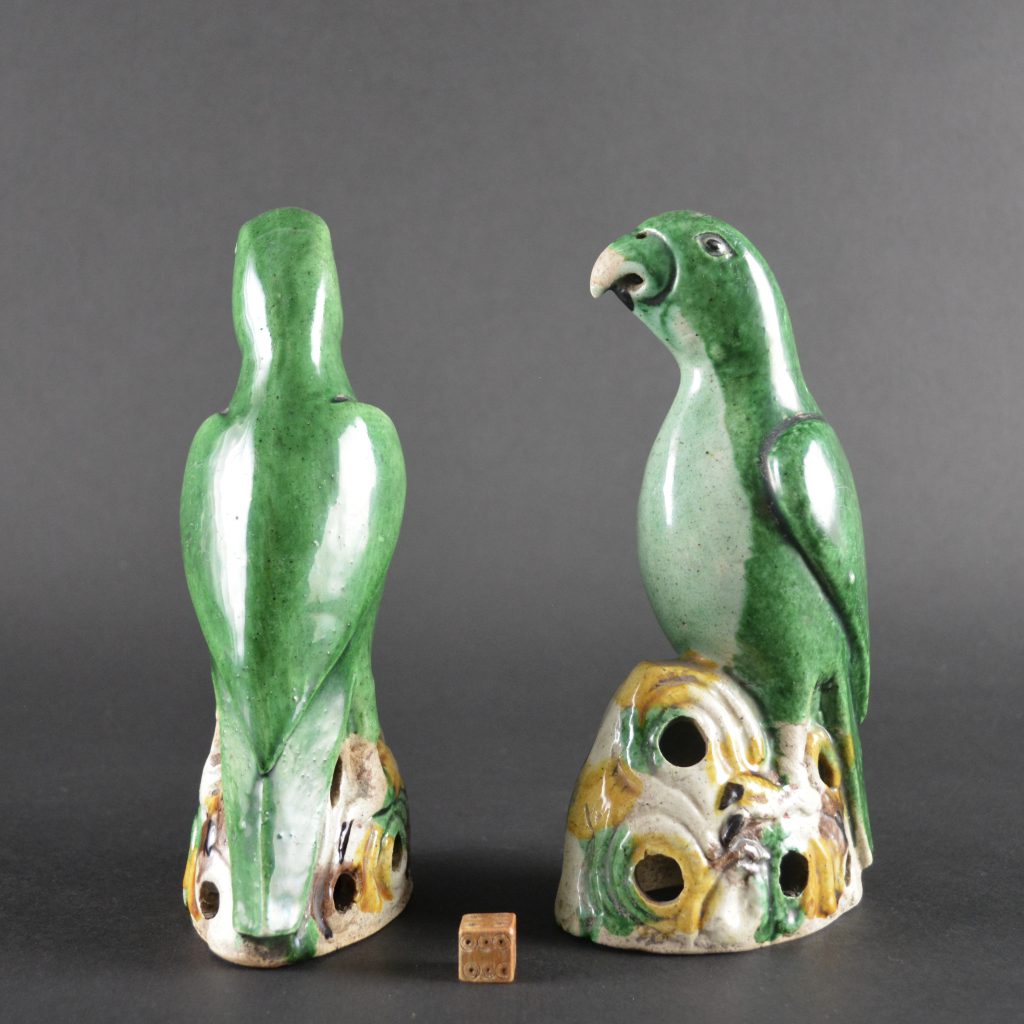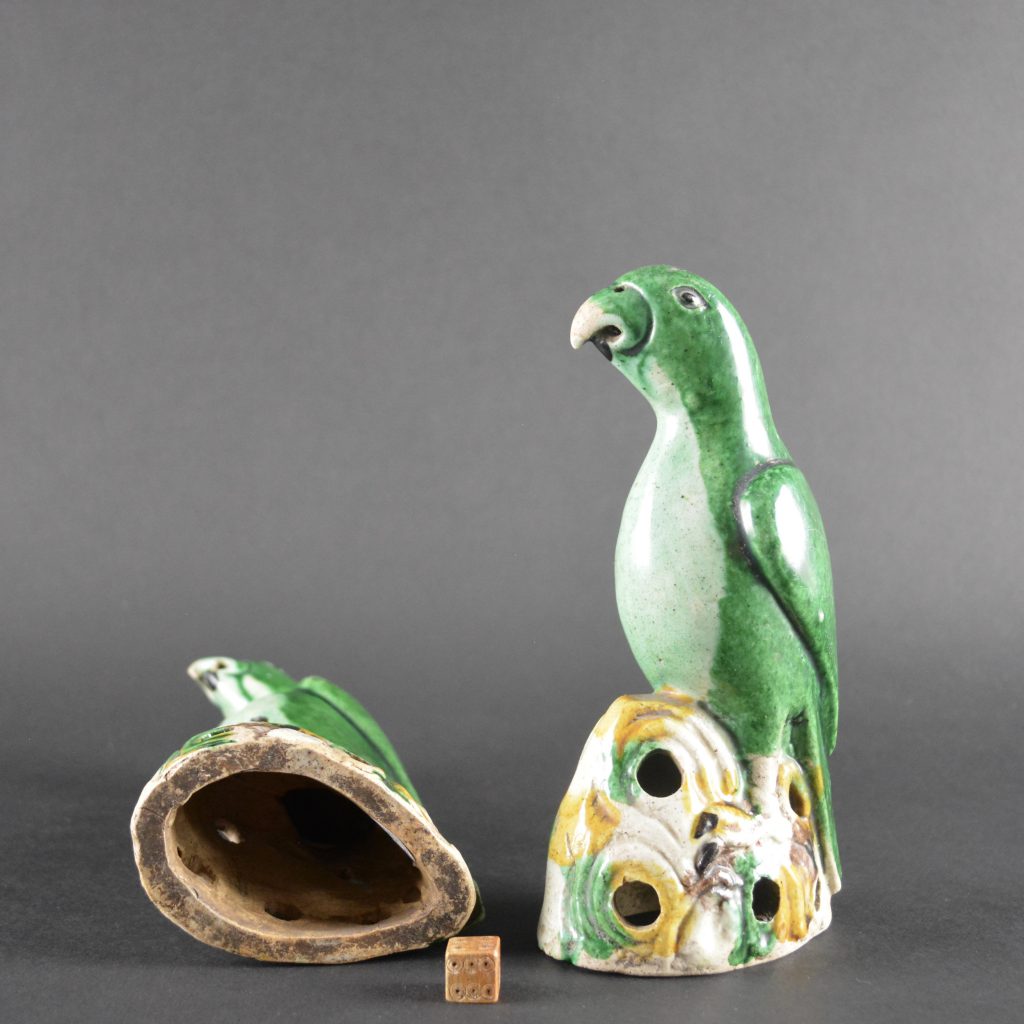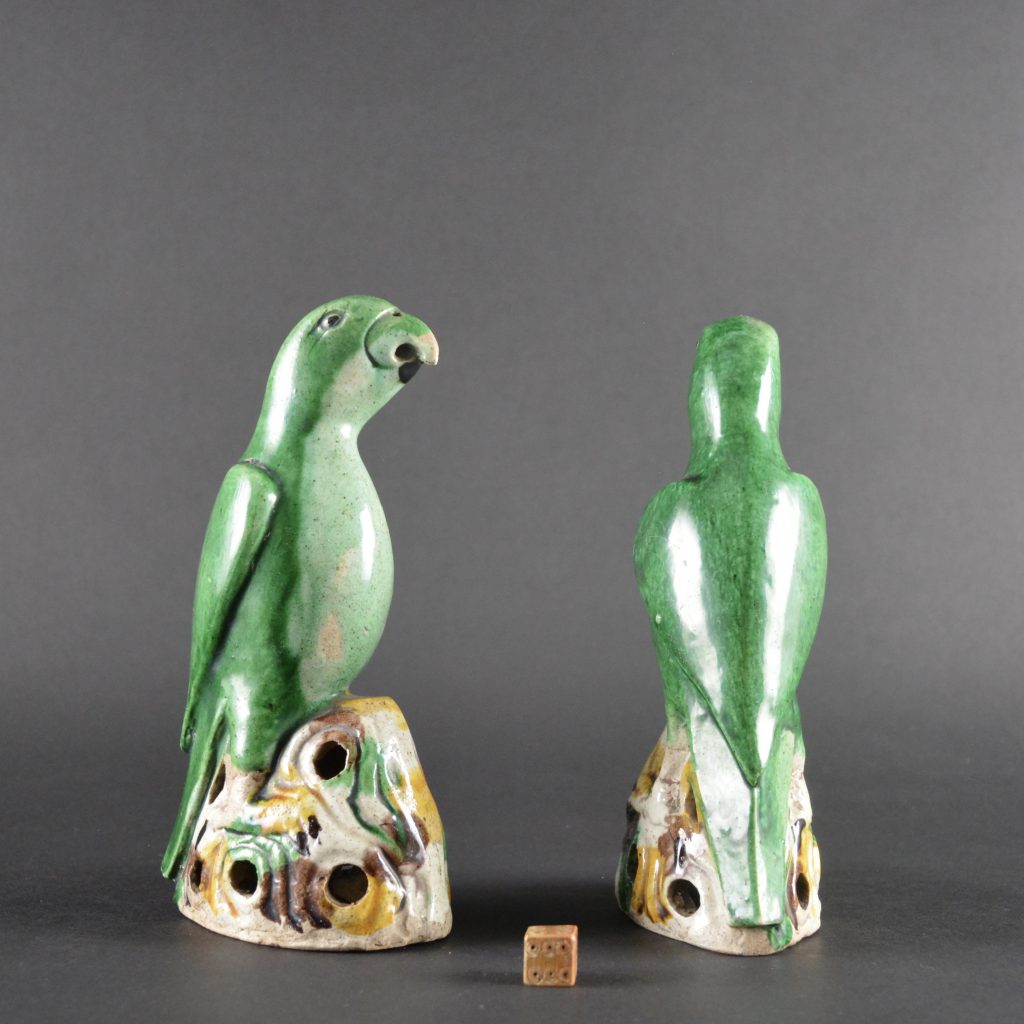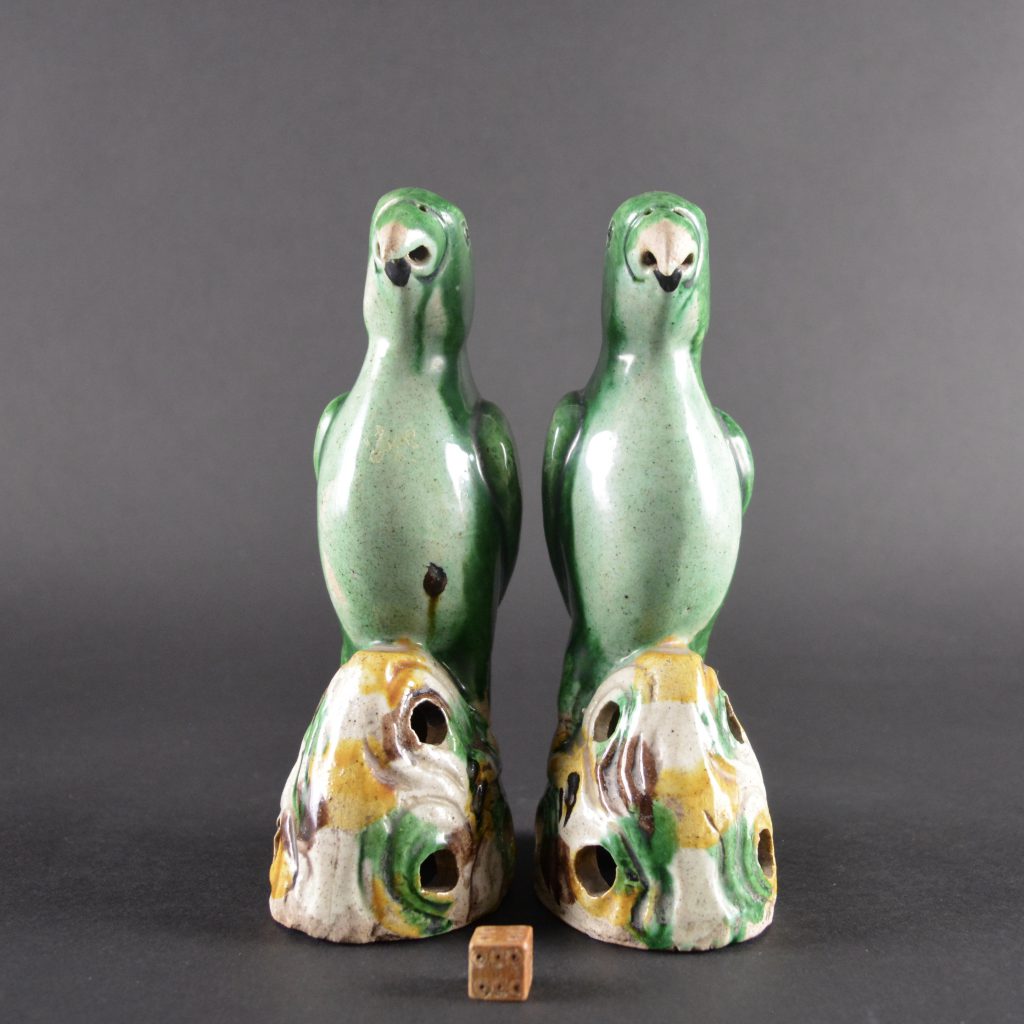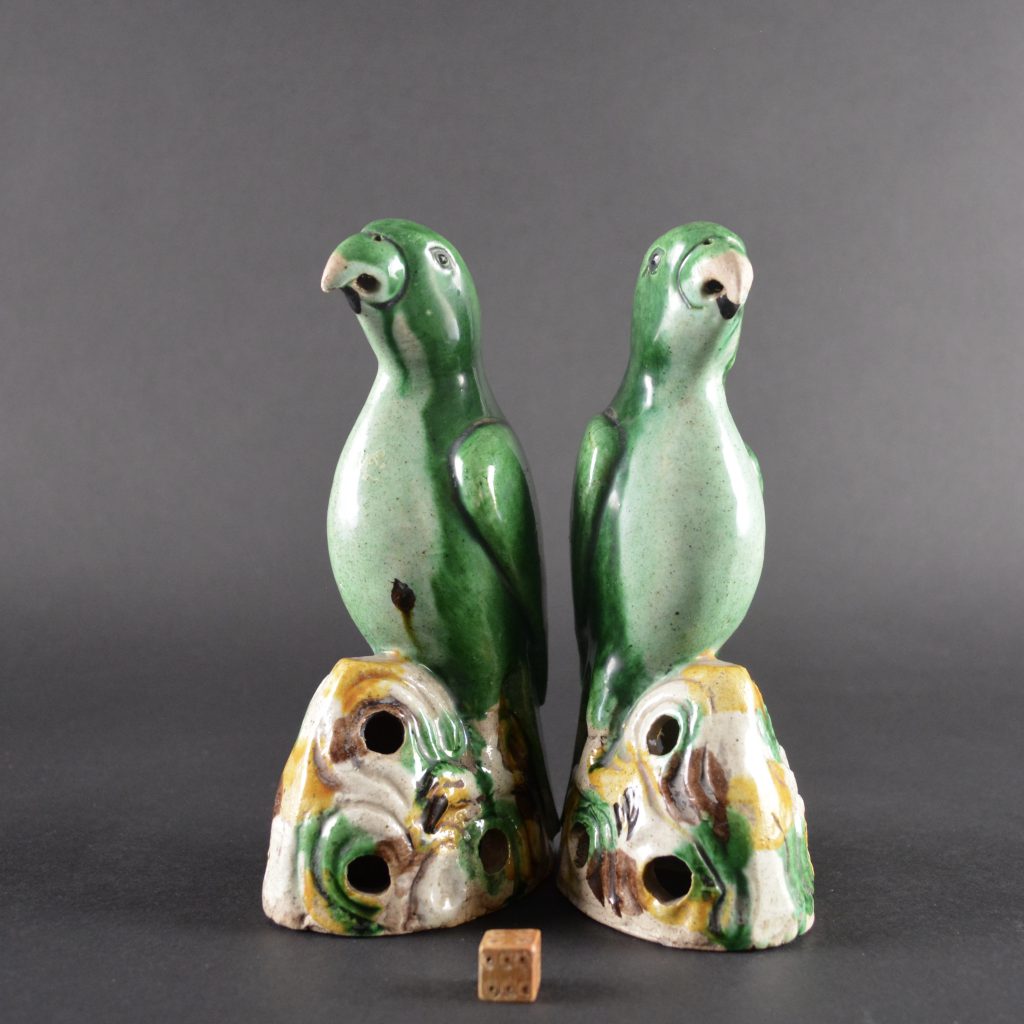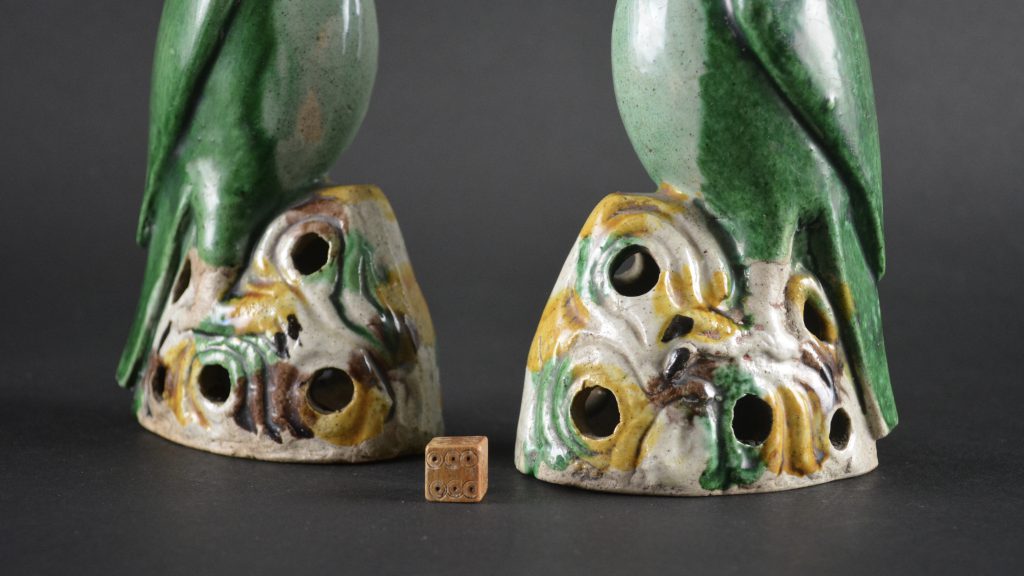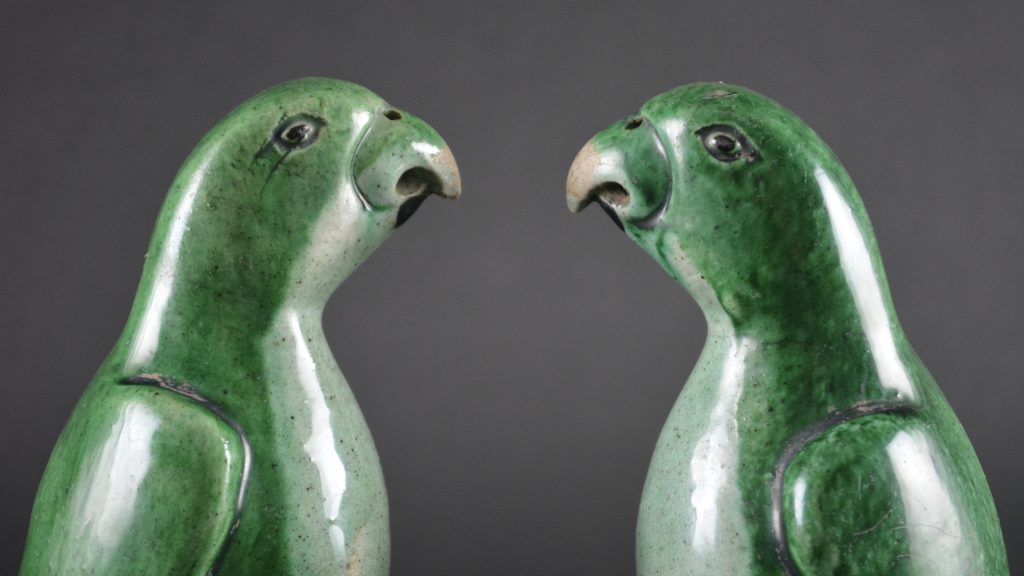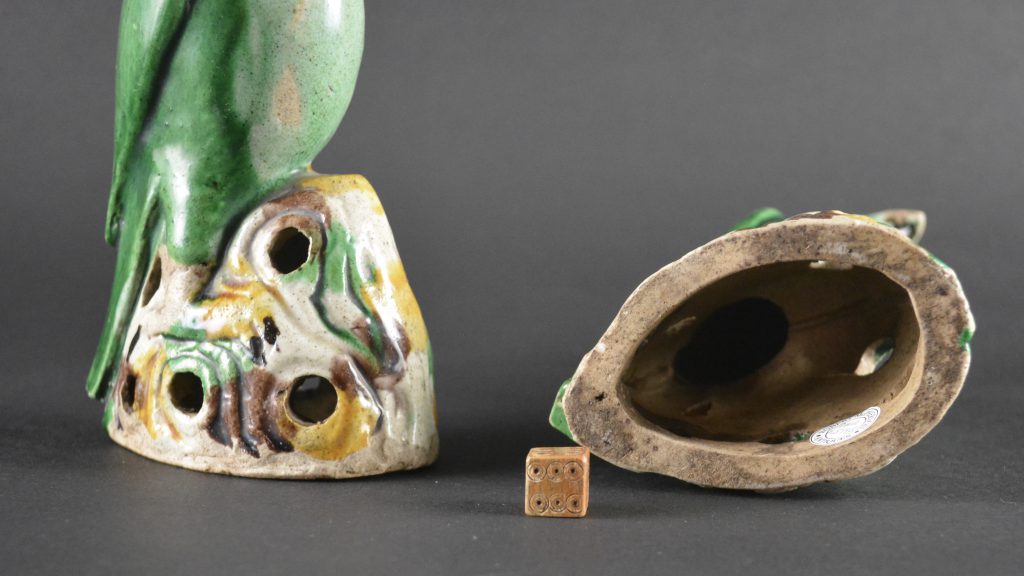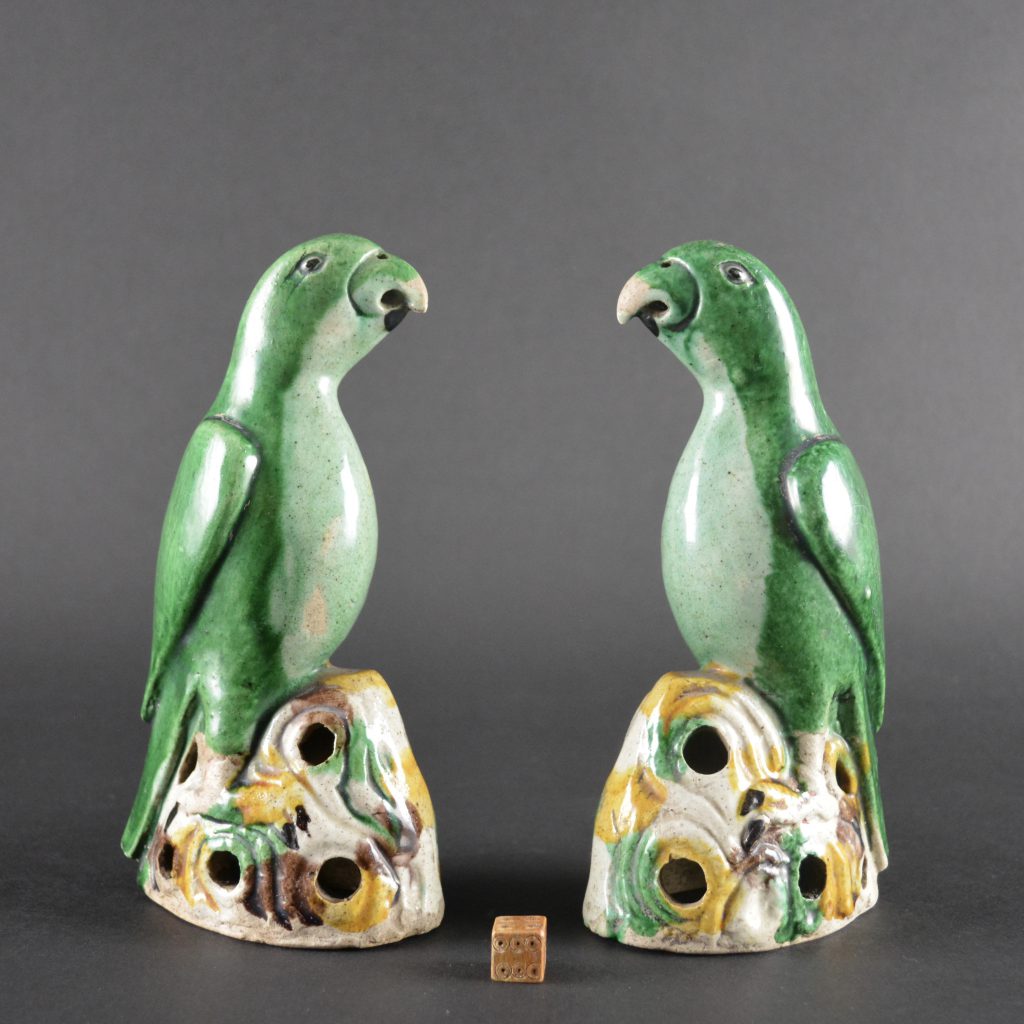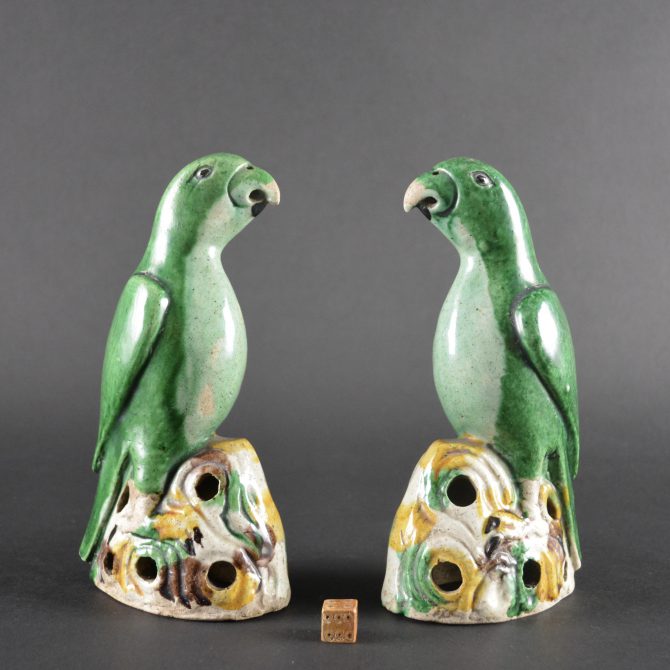
A Pair of Kangxi or Yongzheng Biscuit Porcelain Parrots
A Pair of Kangxi or Yongzheng Biscuit Porcelain Parrots. These early 18th Century Chinese export porcelain parrots are decorated in two tones of green with ‘Egg and Spinach’ rock-work bases.
SOLD
- Condition
- In excellent condition. One parrot has a very small chip underneath the point of it’s beak.
- Size
- Height 18.5 cm (7 1/4 inches).
- Provenance
- N/A
- Stock number
- 25798
Information
Chinese export porcelain biscuit glazed parrots were made over a long period, in fact they are still being made today. It is not the case, as is sometimes said, that they were made during the early 18th century with revivals being made at the end of the 19th century. They were made in relatively small numbers but datable examples show they were pretty much never out of production from the Kangxi period (1662-1722) on.
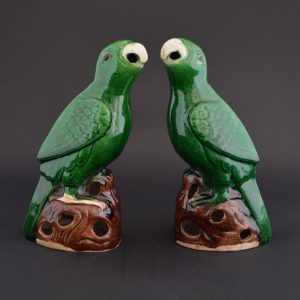
A Pair of Chinese Export Porcelain Biscuit Glazed Parrots, Yongzheng or Qianlong Period c.1730-1780. The Facing Pair Stand on Pierced Rockwork.
SOLD - Robert McPherson Antiques - 24244.
Egg and Spinach Decoration :
This is another of those Western terms used to categorize Chinese ceramics. Unlike many other terms the West has applied to Chinese porcelain, for example Kraak ware or Transitional porcelain, this one is more strait forward and less contentious. The group is characterized by the enamel decoration being directly on to the unglazed `biscuit` porcelain body, it is possibly more correct to describe this as a stained glaze rather than an enamel. The piece was then finished with a clear glaze. Egg and Spinach relate closely to Tang Sancai pottery of the 8th century, these lead glazed ware also have colours that run into one another. The blotchy enamel colours of Egg and Spinach consist of a rich green, a brownish aubergine and yellow with areas of body colour showing through the clear glaze (no doubt created by wax resist). This type of decoration could sometimes include areas, for example the interior of a bowl, decorated in blue and white. These pieces appear to date to the early 18th century rather than earlier. Egg and Spinach itself was popular in China from the Transitional period of the middle of the 17th century until the second quarter of the 18th century. In my view most of the Egg and Spinach was produced in the early 18th century but the literature often suggests an earlier date. Clearly the pieces with blue and white decoration relate to closely to late Kangxi and Yongzheng porcelain. The Ca Mau Cargo had many small pieces with Egg and Spinach decoration, this wreck dates to the Yongzheng period (1723-1735). Indeed most pieces with this distinct colour scheme were small. Egg and Spinach was used in the 19th century, many of these objects were copies of, or at least based on, the original 17th and 18th century examples. In late 19th and early 20th century Europe it was wildly collected, often with other biscuit decorated Chinese porcelain, collectors such as Mrs. Nellie Ionides (1883 – 1962) were at the forefront of this trend.
